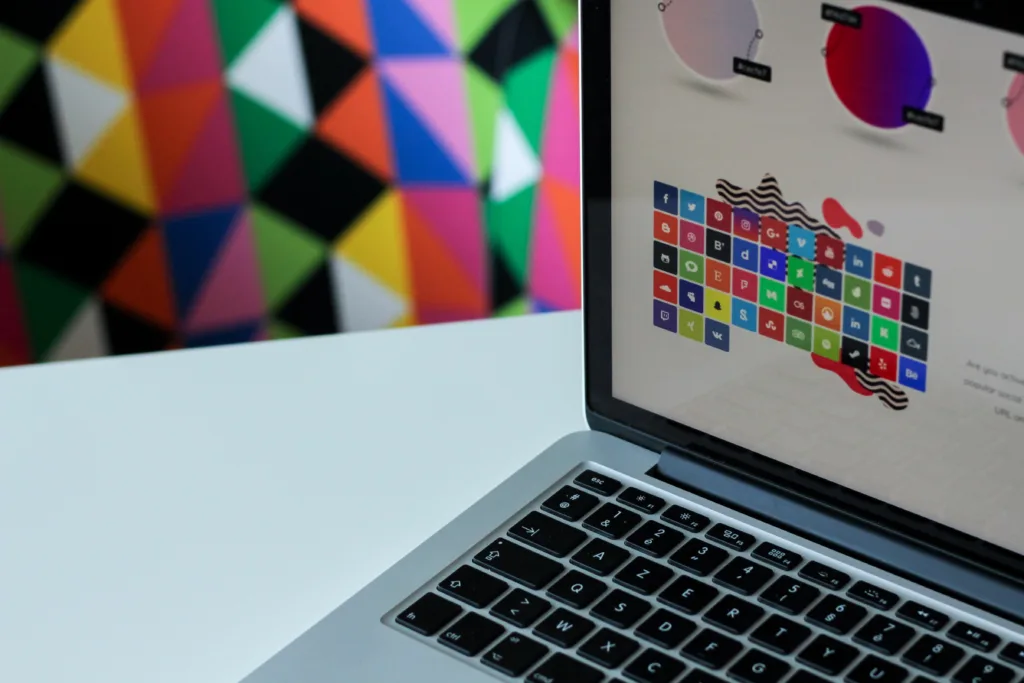Art is a vast and diverse field that encompasses various mediums, techniques, and styles. From traditional paintings and sculptures to digital creations, art has evolved significantly over the years. One crucial aspect of digital art is rendering, which plays a crucial role in bringing virtual creations to life.
In the context of digital art, rendering refers to the final stage of processing a digital image, animation, or 3D model. It is the process of generating a realistic or stylized image based on a computer program’s calculations. Rendering allows artists to visualize their models and create the final image or animation with intricate details and realistic lighting.
The process of rendering involves transforming a 2D or 3D wireframe model into a visually appealing and lifelike representation. It adds shading, color, and texture to the model, enhancing its realism and depth. Through rendering, artists can simulate different materials, lighting conditions, and atmospheric effects to create stunning visual experiences.
Rendering can be done using specialized software, such as Autodesk Maya, Blender, or Cinema 4D, which provide a wide range of tools and settings to achieve desired results. These programs utilize complex algorithms to calculate the interaction of light with the objects in the scene, resulting in accurate reflections, shadows, and highlights.
There are two main types of rendering: real-time rendering and pre-rendering. Real-time rendering is commonly used in video games and interactive applications, where the computer renders images in real-time as the viewer interacts with the virtual environment. This type of rendering requires powerful hardware and often sacrifices some level of visual fidelity for performance.
On the other hand, pre-rendering involves generating the final image or animation before it is viewed by the audience. This method allows artists to spend more time refining the details and achieving photorealistic results. Pre-rendered images or animations are typically used in movies, architectural visualizations, and advertising, where high-quality visuals are of utmost importance.
Rendering in digital art is a complex and time-consuming process. It requires technical knowledge, artistic skills, and a keen eye for detail. Artists need to consider factors such as lighting, materials, composition, and camera angles to create visually compelling and emotionally evocative artwork.
Rendering is a crucial aspect of digital art that brings virtual creations to life. Whether it’s a 3D model, animation, or digital painting, rendering adds depth, realism, and visual appeal to the final artwork. Through the use of specialized software and techniques, artists can create stunning visual experiences that captivate viewers and evoke emotions. Rendering is a testament to the advancements in technology and the limitless possibilities it offers to artists in the digital age.
What Does Rendering In Art Mean?
Rendering in art refers to the process of creating a final image or visualization of a digital artwork, animation, or 3D model. It is the last stage of processing where the software takes the raw data of the model and transforms it into a realistic or stylized image. This process involves applying shading, lighting, textures, and other visual effects to enhance the appearance of the artwork.
The rendering software uses complex algorithms to calculate the interaction of light and materials, creating shadows, reflections, and other realistic elements. It simulates the behavior of light rays as they bounce off surfaces and interact with the environment, resulting in a realistic representation of the virtual world.
Rendering can be a time-consuming task, especially for complex and detailed artworks or animations. The software requires significant computational power to perform the calculations necessary for creating a high-quality image. Artists often adjust various settings and parameters to achieve the desired visual outcome, such as the level of detail, color accuracy, and overall aesthetic.
Once the rendering process is complete, the artist can review the final image and make any necessary adjustments or post-processing edits. This stage allows them to refine the artwork, enhance specific elements, or add additional effects to achieve their artistic vision.
Rendering in art is the final stage of processing a digital image, animation, or 3D model using specialized software. It involves applying shading, lighting, and other visual effects to create a realistic or stylized representation of the artwork.

What Is Render In Digital Art?
Rendering in digital art refers to the process of generating a final image or animation from a 3D model or scene using computer software. It involves the calculation of lighting, shading, and other visual effects to create a realistic or stylized representation of the virtual objects.
The rendering process begins with the placement and arrangement of objects in a virtual scene. Artists can use specialized software programs, such as Autodesk Maya or Blender, to create and manipulate these objects, defining their shape, texture, and other properties. Once the scene is set up, the rendering software calculates how light interacts with the objects and their surroundings, which contributes to the overall appearance of the final image.
During rendering, the software performs complex calculations that simulate the behavior of light rays as they bounce off surfaces, interact with materials, and cast shadows. These calculations take into account factors such as the material properties of objects, the position and intensity of light sources, and the camera’s perspective.
The rendering process can be time-consuming and resource-intensive, especially for complex scenes or high-quality visual effects. Artists may need to adjust various parameters, such as the level of detail, the quality of shadows, or the complexity of textures, to achieve the desired result within a reasonable timeframe.
Once the rendering is complete, the software produces a finalized image or animation that can be further edited or used for various purposes. This final output may be in the form of a still image, a sequence of images for animation, or even a 360-degree panorama.
Rendering in digital art is the process of generating a final image or animation by simulating the interaction of light with virtual objects and scenes. It involves complex calculations and adjustments to achieve a realistic or stylized representation of the virtual world.
What Does It Mean To Render An Image?
Rendering an image refers to the process of generating a realistic or artistic representation of a 2D or 3D model using computer software. It involves converting a digital model, which can be a simple shape or a complex scene, into a visual output that can be viewed or printed.
The rendering process takes into account various factors such as lighting, shading, texture, and perspective to create a final image that closely resembles the intended appearance of the model. This can include simulating the behavior of light sources, determining how light interacts with surfaces, and calculating the color and intensity of each pixel in the image.
Rendering can be done in real-time or offline. Real-time rendering is used in applications such as video games and virtual reality, where the image needs to be generated quickly to respond to user interactions. Offline rendering, on the other hand, is used in applications like film and animation, where the image quality is paramount and rendering can take longer.
The rendering process typically involves several steps. First, the digital model is prepared by defining its geometry, textures, materials, and other properties. Then, the renderer calculates how light interacts with the model’s surfaces, taking into account factors such as reflection, refraction, and shadows. the renderer generates a 2D image by projecting the 3D model onto a virtual camera and converting the information into pixels.
Rendering can be a computationally intensive task, especially for complex scenes or high-quality output. It often requires powerful hardware and specialized software to achieve realistic results within a reasonable timeframe. However, advancements in technology have made rendering more accessible, allowing artists, designers, and developers to create visually stunning images and animations.
What Is Rendering In Design?
Rendering in design refers to the process of enhancing a two-dimensional or three-dimensional wireframe by adding elements such as shading, color, and lamination. This process aims to create realistic and lifelike images on a screen or other digital medium. Rendering can be performed either ahead of time, known as pre-rendering, or in real-time on-the-fly.
The primary purpose of rendering is to transform a basic wireframe, which is essentially a skeletal representation of an object or scene, into a visually appealing and visually accurate representation. By adding shading, designers can simulate the behavior of light and shadow, which helps to create a sense of depth and realism. Color is employed to make the objects or scenes visually appealing and to convey specific moods or emotions. Lamination, on the other hand, adds a glossy or reflective surface to objects, giving them a more polished and finished appearance.
Rendering can be a time-consuming process, especially when dealing with complex and detailed designs. However, advancements in computer hardware and software have significantly improved rendering capabilities, allowing for faster and more efficient rendering times. This has enabled designers to create high-quality renderings in a relatively short amount of time.
In the field of design, rendering plays a crucial role in various industries such as architecture, interior design, product design, and animation, among others. It allows designers to present their ideas and concepts in a visually compelling and realistic manner, helping clients and stakeholders to better understand and visualize the final product. Additionally, rendering is often used to create marketing materials, advertisements, and visualizations for presentations or promotional purposes.
Rendering in design involves the process of adding shading, color, and lamination to a wireframe to create realistic and visually appealing images. It is an essential step in transforming basic designs into visually accurate representations, allowing designers to effectively communicate their ideas and concepts.

Conclusion
Art is a multifaceted and dynamic form of expression that encompasses a wide range of mediums and techniques. It serves as a means for individuals to convey their emotions, thoughts, and perspectives, while also allowing for personal interpretation and appreciation by audiences. Through the use of various tools and techniques, artists are able to create visually stunning and thought-provoking pieces that can evoke powerful emotions and spark meaningful conversations.
Digital art, in particular, has revolutionized the artistic landscape, allowing for endless possibilities and experimentation. With the advancements in technology, artists now have access to a wide array of tools and software that enable them to bring their visions to life in ways that were once unimaginable. The process of rendering, in digital art, plays a crucial role in the finalization of a piece, transforming a raw concept into a fully realized and visually striking image or animation.
Whether it be through traditional mediums such as painting and sculpture, or through digital platforms, art continues to captivate and inspire individuals from all walks of life. It has the power to transcend language and cultural barriers, fostering a sense of unity and shared experience. Art not only enriches our lives, but it also serves as a reflection of society, capturing the essence of a particular time and place.
In a world that often feels fast-paced and disconnected, art serves as a reminder of our shared humanity and the importance of self-expression. It encourages us to challenge our perspectives, question the status quo, and explore new possibilities. As we continue to navigate the complexities of the modern world, art will undoubtedly remain an integral part of our collective cultural fabric, allowing us to connect, inspire, and evolve.
